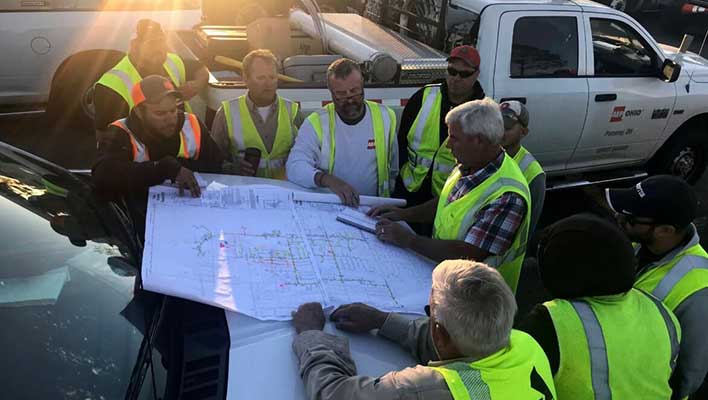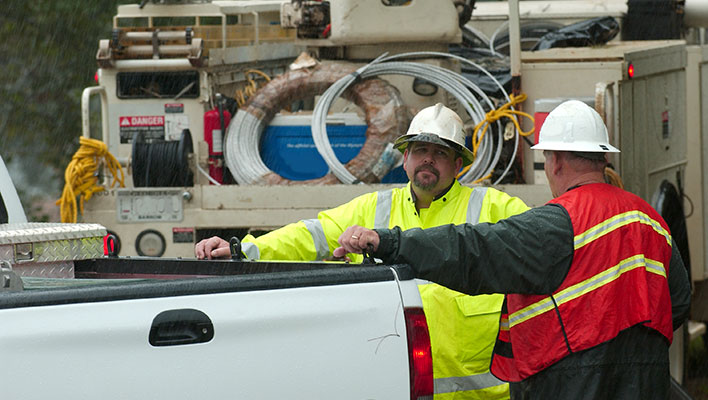Chris McClain is engineering supervisor at Southern Company and is an advocate for helping the electric transmission and distribution industry advance power restoration by leveraging technology to seamlessly manage damage assessment and repair. Bringing insights from the front lines of digital utility transformation, his blog series walks readers through the journey from managing mountains of paper feeder maps to mobile workforce management and power restoration in one of the country’s frequent storm hotspots.
Effective and efficient power restoration in our country is only possible through collaboration among industry peers. Mutual assistance agreements exist between electric utilities, cooperatives, and municipal providers in neighboring cities, counties, and even states hundreds of miles away. Mutual assistance extends to the way power transmission and distribution companies work under blue skies, as we collaborate and share best practices with our peers, just as much as we assist each other during storms.
Aiming to further advance storm response and power restoration for the industry, we have attempted to identify opportunities and encountered numerous obstacles. And although we haven’t got it all figured out yet, I want to take a moment to share some insights, best practices, and lessons learned.
In my introductory blog post, I showed just how innovative our industry is in many areas as we build resilience into systems with ADMS and FISR technologies, map our circuits with robust GIS, and manage outage restoration during a storm with an OMS.
In other areas, we have been slow to fully realize the potential of technologies such as mobile devices in the field, holding back the benefits of mobile workforce management. The fact that our industry still relies on paper feeder maps is less about whether companies are reluctant to go digital and more about adoption of technology in the field. Lineworkers are often pragmatic; if a digital process takes multiple cumbersome steps, then they will fall back on tried and true ways of getting the job done.
Unlike most construction projects, transmission and distribution systems are dynamic, so an “as built” diagram that has a good shelf life for some sectors becomes rapidly out of date in our industry. We’re always expanding systems to meet the growth of communities, replacing and upgrading assets, and, often times, completely rebuilding miles of line after a storm. It presents power service providers with a serious paper data problem.
Consider a service area with 1,750 circuits and 70 field offices, each location servicing between 20 and 30 circuits. Keeping 5 copies of each feeder map on hand in this scenario means that the operating company needs to maintain 9,000 copies. And for utilities with multiple operating companies, this number can easily exceed 45,000! Because of the dynamic nature of the power grid, organizations must periodically shred and reprint all these feeder maps for blue sky operations and storm response.
The paper data problem becomes even more challenging during restoration when hundreds, or even thousands, of non-native crew members arrive, putting copy machines into full time duty. In the wake of an event, damage assessors carry their paper feeder maps to the field. They add handwritten notes, which must be transcribed into an outage management system at the end of the day.
When it comes to digital transformation, there are costs for standing still. Our industry is built around safety, so information about a circuit that is out of date poses multiple risks to lineworkers. Our second mission is to get the lights back on efficiently. Paper feeder maps delay the damage assessment process as repair can only be prioritized once the assessor’s notes have been keyed in.
Despite the ubiquity of mobile devices today and expanding 5G networks, going digital in the power sector isn’t as straight forward as giving everyone access to the back office GIS system for the latest digital circuit maps on their phone. GIS should be part of the solution, but as a component of a larger mobile workforce management strategy. You must also take into account situational awareness, security, offline connectivity, and how large numbers of native and non-native crews will participate in your digital transformation.
Defining and managing mobile workforce management digital transformation is the topic of my next blog. Future posts will then focus on scaling up mobile workforce management, finding the right technology partner, and giving crews greater optionality to make the next best step in the field.
Did you enjoy Chris’s blog? Check out his previous post: 5 Keys to Advance Power Restoration: Mobile Workforce Management Digital Transformation




